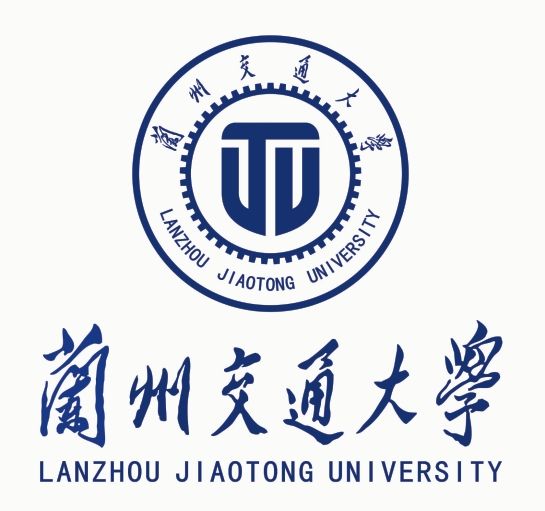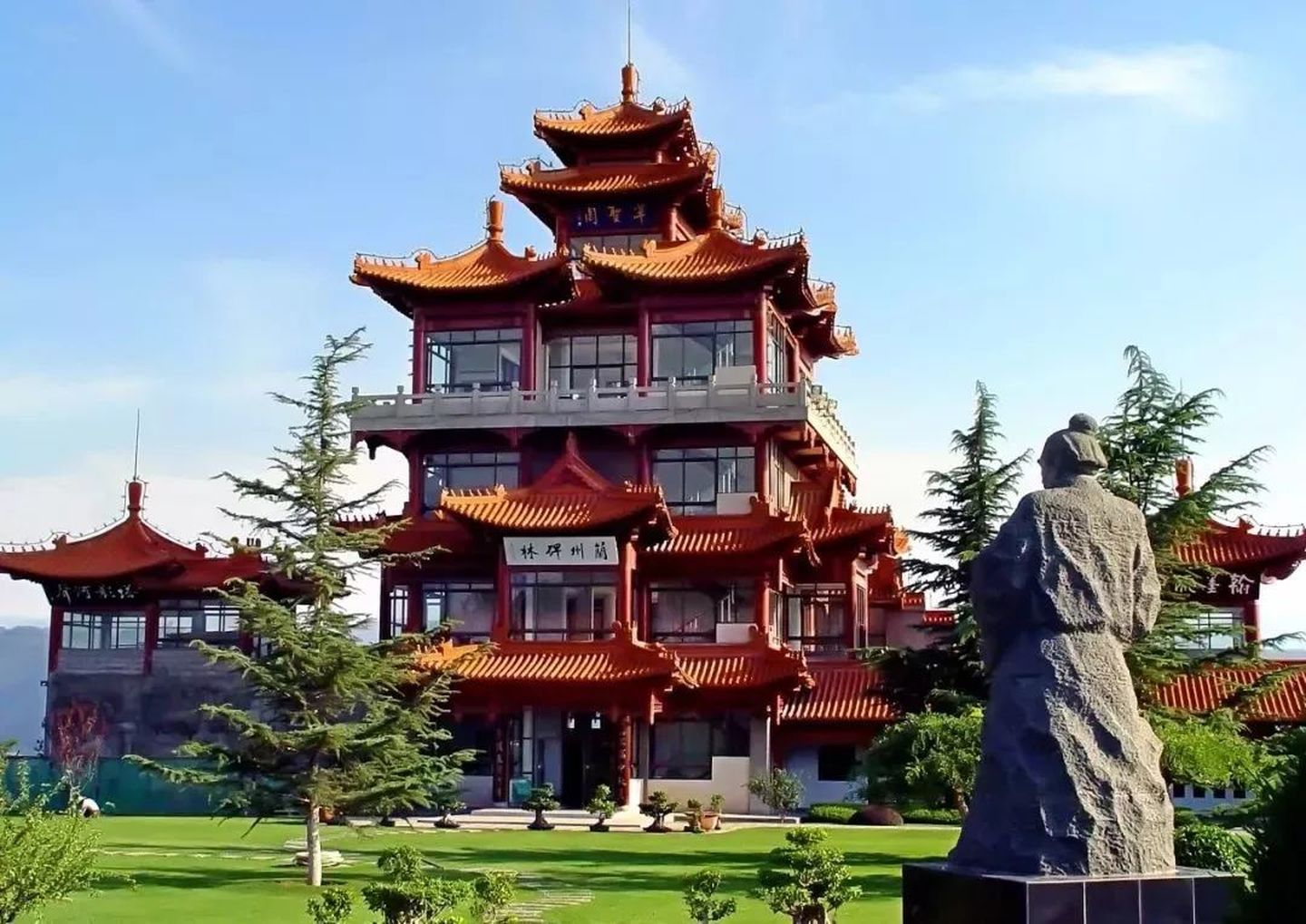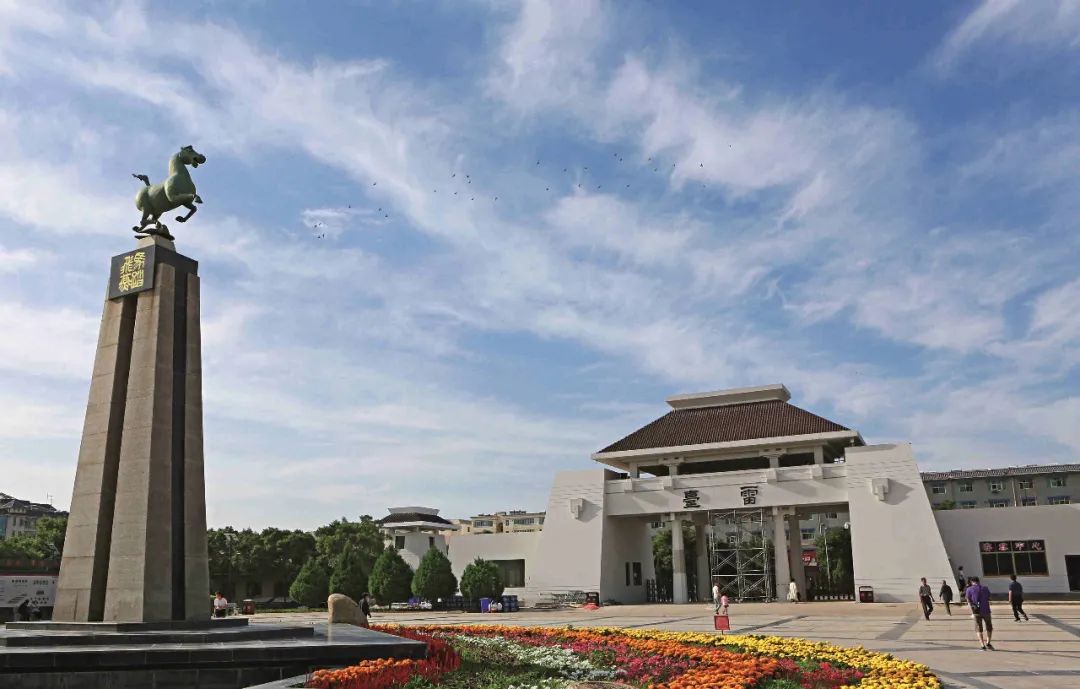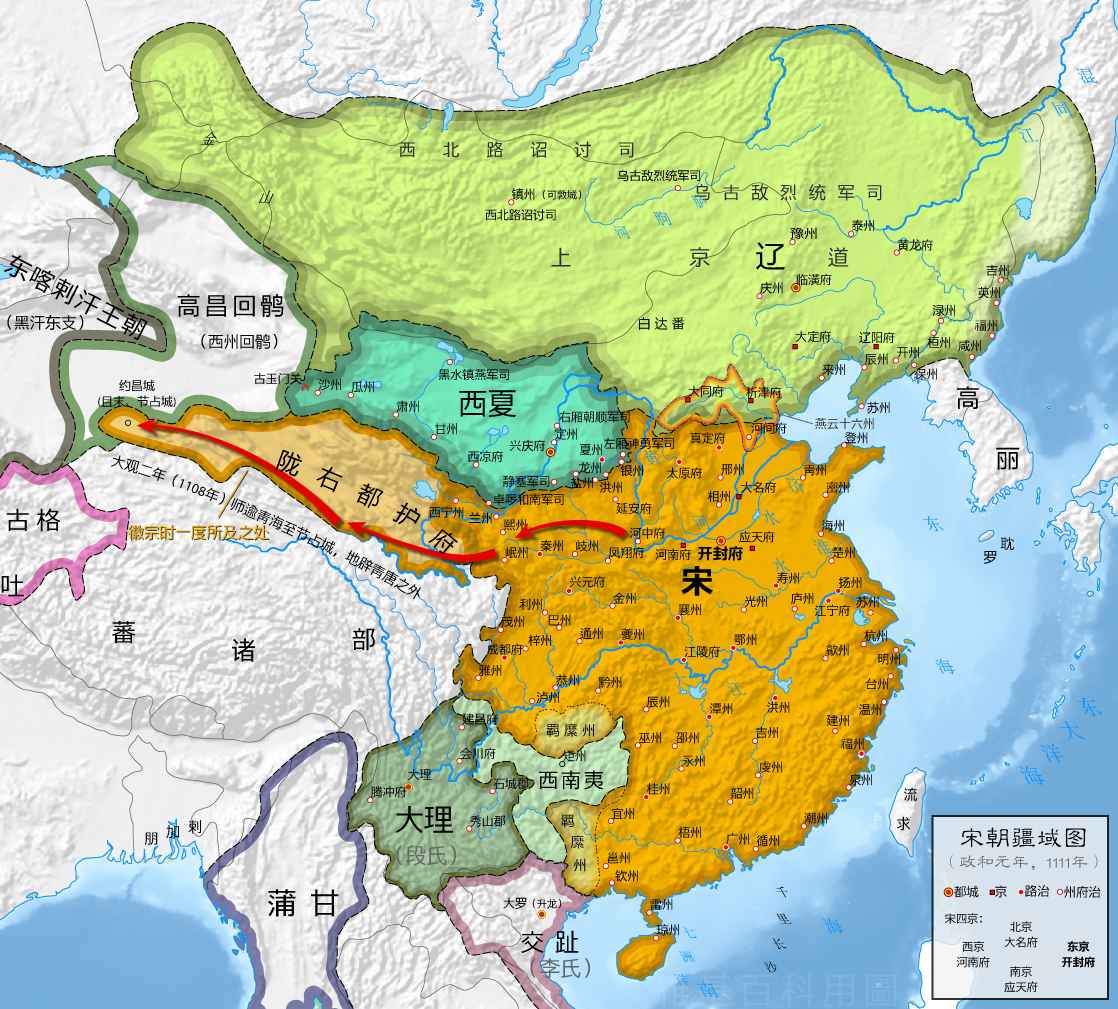
Deutsch-Chinesische Enzyklopädie, 德汉百科
 Gansu Sheng-GS
Gansu Sheng-GS

兰州,简称“兰”,是甘肃省省会,中国西北地区重要的工业基地和综合交通枢纽,西部地区重要的中心城市之一,西陇海兰新经济带重要支点, 西北地区重要的交通枢纽和物流中心,是新亚欧大陆桥中国段五大中心城市之一,是中国华东、华中地区联系西部地区的桥梁和纽带,西北的交通通信枢纽和科研教育中心,丝绸之路经济带的重要节点城市,也是中国人民解放军西部战区陆军机关驻地。
兰州是古丝绸之路上的重镇。早在5000年前,人类就在这里繁衍生息。西汉设立县治,取“金城汤池”之意而称金城。隋初改置兰州总管府,始称兰州。
2012年8月28日,国务院批复设立西北地区第一个、中国第五个国家级新区——兰州新区。
兰州市,简称兰,别称金城,是中华人民共和国甘肃省省会,是中国陆域版图的近几何中心,西部地区重要的中心城市。中国人民解放军西部战区陆军机关驻地。一带一路重要节点城市,中国重要铁路枢纽之一,有包兰铁路、兰新铁路、兰青铁路、陇海铁路、兰渝铁路交汇于此。
Ursprünglich zum Qiang-Gebiet gehörend wurde Lanzhou im 6. Jahrhundert v. Chr. ein Teil des Königreichs Qin. Zu dieser Zeit war Lanzhou unter dem Namen Jincheng (Goldene Stadt) bekannt. Im Jahr 81 v. Chr. wurde Lanzhou in der Han-Dynastie (206 v. Chr.–220 n. Chr.) Hauptstadt des Gebietes (Xian) und später der Präfektur (jun) Jincheng. Das Gebiet wurde in Yunwu umbenannt.
Mindestens seit dem ersten Jahrtausend v. Chr. war die Stadt ein bedeutender Verbindungspunkt der historischen nördlichen Seidenstraße und ebenfalls ein wichtiger Ort zur Überquerung des Gelben Flusses.[1][2] Sie war eine Art Grenzübergang zwischen dem chinesischen Kernland im Südosten und den Krieg führenden Stämmen im Norden und Westen. Zum Schutz der Stadt wurde die Chinesische Mauer bis zur Stadt Yumen erweitert.(Quelle:Wikipedia)
Ursprünglich zum Qiang-Gebiet gehörend wurde Lanzhou im 6. Jahrhundert v. Chr. ein Teil des Königreichs Qin. Zu dieser Zeit war Lanzhou unter dem Namen Jincheng (Goldene Stadt) bekannt. Im Jahr 81 v. Chr. wurde Lanzhou in der Han-Dynastie (206 v. Chr.–220 n. Chr.) Hauptstadt des Gebietes (縣 / 县, xiàn = (Land-)Kreis) und später der Präfektur (郡, jùn = Kreis) Jincheng. Das Gebiet wurde in Yunwu (允吾, yǔnwú) umbenannt.
Mindestens seit dem ersten Jahrtausend v. Chr. war die Stadt ein bedeutender Verbindungspunkt der historischen nördlichen Seidenstraße und ebenfalls ein wichtiger Ort zur Überquerung des Gelben Flusses.[1][2] Sie war eine Art Grenzübergang zwischen dem chinesischen Kernland im Südosten und den Krieg führenden Stämmen im Norden und Westen. Zum Schutz der Stadt wurde die Chinesische Mauer bis zur Stadt Yumen erweitert.
Nach dem Untergang der Han-Dynastie wurde Lanzhou Hauptstadt verschiedener Nachfolgestaaten. Im 4. Jahrhundert wurde es kurz die Hauptstadt des unabhängigen Staates Frühere Liang. Die Nördliche Wei-Dynastie (386–534) stellte die Präfektur Jincheng unter dem Namen Zicheng wieder her. Unter der Sui-Dynastie (581–618) wurde die Stadt erstmals Hauptstadt der Präfektur Lanzhou 蘭州府 / 兰州府, lánzhōufǔ, was sie unter der Tang-Dynastie (618–907) blieb. Im Jahre 763 wurde das Gebiet von Tibet eingenommen, konnte jedoch 843 von der Tang-Dynastie zurückerobert werden. Später fiel das Gebiet an die Tanguten, bevor es 1041 von der Song-Dynastie (960–1126) zurückerobert wurde. Der Name wurde zu dem Zeitpunkt wieder in Lanzhou geändert, und die Präfektur bekam den Namen Lanzhuan. Zwischen dem 5. und 11. Jahrhundert wurde die Region der heutigen Provinz Gansu zu einem Zentrum des Buddhismus. 1127 fiel Lanzhou an die Jin-Dynastie und ab 1235 gehörte die Stadt zum Gebiet der Mongolen. Unter der Ming-Dynastie (1368–1644) wurde die Präfektur auf den Status einer Region zurückgestuft und der Präfektur Lintao unterstellt. 1477 wurde der alte Status wiederhergestellt.
Ihren heutigen Namen erhielt die Stadt 1656 unter der Qing-Dynastie (1616–1911). 1666 wurde Lanzhou Hauptstadt der neu gegründeten eigenständigen Provinz Gansu. 1739 wurde der Sitz von Lintao nach Lanzhou verlagert, woraus sich später die übergeordnete Präfektur Lanzhou entwickelte.
Während des Dunganenaufstandes 1864–1875 erlitt die Stadt schwere Schäden. 1909 wurde mit der Zhongshan-Brücke (heutiger Name) die erste feste Brücke über den Gelben Fluss fertiggestellt. In den 1920 und 1930er Jahren wurde Lanzhou zu einem Zentrum des sowjetischen Einflusses im Nordwesten von China. Während des Zweiten Japanisch-Chinesischen Krieges (1937–1945) war Lanzhou der Endpunkt der 3200 km langen Autobahn, die für sowjetischen Lieferungen in die Region Xi’an genutzt wurde. Die Autobahn wurde bereits im Jahr 1935 fertiggestellt und blieb bis zum Bau der Bahnstrecke nach Ürümqi die wichtigste Verkehrsverbindung Nordwest-Chinas. Während des Kriegs war Lanzhou starken japanischen Bombenangriffen ausgesetzt.
蘭州市(らんしゅうし、中国語: 兰州市、拼音: Lánzhōu、英語: Lanzhou)は中華人民共和国甘粛省の省都。雅名を金城といい、石油工業が発達している。
Lanzhou is the capital and largest city of Gansu Province in Northwest China.[4] The prefecture-level city, located on the banks of the Yellow River, is a key regional transportation hub, connecting areas further west by rail to the eastern half of the country. Historically, it has been a major link on the Northern Silk Road and it stands to become a major hub on the New Eurasian Land Bridge. The city is also a center for heavy industry and petrochemical industry.
Lanzhou is home to 3,616,163 inhabitants at the 2010 census and 2,177,130 in the built-up area (urban) of 1,088 square kilometres (420 sq mi).[5] By 2018 its population within the central urban area of 298 square kilometres (115 sq mi) rose to 2,890,000 people.[1]
Lanzhou (兰州 ou 蘭州 ; hanyu pinyin : Lánzhōu ; Wade-Giles : Lanchow ; EFEO : Lan-Tcheou) est la capitale de la province du Gansu en Chine.
Lanzhou (cinese semplificato 兰州; tradizionale 蘭州; pinyin Lánzhōu) è una città-prefettura cinese, capoluogo della provincia nordoccidentale del Gansu.
Lanzhou (chino simplificado: 兰州, chino tradicional: 蘭州, pinyin: Lánzhōu, transcripción antigua: Lanchow) es la capital de la provincia de Gansu en la República Popular China.
Lanzhou está situada a orillas del río Amarillo. Fue fundada durante la dinastía Han y su historia está ligada a la Ruta de la Seda ya que era uno de los centros de tránsito de las caravanas que comerciaban con Occidente. En esa época se la conocía como "la ciudad dorada" ya que en la zona se encontraron diversas minas de oro. Entre los siglos V y XI, Lanzhou se convirtió en un centro para el estudio del budismo.
Ланьчжо́у (кит. трад. 蘭州, упр. 兰州, пиньинь: Lánzhōu) — городской округ в провинции Ганьсу КНР. Место пребывания властей провинции Ганьсу.










 Beijing Shi-BJ
Beijing Shi-BJ
 Gansu Sheng-GS
Gansu Sheng-GS

 History
History
 L 1000 - 1500 AD
L 1000 - 1500 AD
 Hebei Sheng-HE
Hebei Sheng-HE
 Heilongjiang Sheng-HL
Heilongjiang Sheng-HL
 Jilin Sheng-JL
Jilin Sheng-JL
 Liaoning Sheng-LN
Liaoning Sheng-LN
 Nei Mongol Zizhiqu-NM
Nei Mongol Zizhiqu-NM
 Ningxia Huizu Zizhiqu-NX
Ningxia Huizu Zizhiqu-NX
 Qinghai Sheng-QH
Qinghai Sheng-QH
 Shaanxi Sheng-SN
Shaanxi Sheng-SN
 Shanxi Sheng-SX
Shanxi Sheng-SX

辽朝(907年-1125年),国号大辽,又称大契丹国(契丹国,契丹大字:![]() )[注 1],是中国历史上由契丹人建立的一个朝代,国祚210年[2]。
)[注 1],是中国历史上由契丹人建立的一个朝代,国祚210年[2]。
契丹族首领耶律阿保机吞并了契丹各个部落后,于916年称帝建国“契丹”。918年定都临潢府(今内蒙古巴林左旗南)。契丹屡次南下中原,946年阿保机之子耶律德光攻灭后晋后确定国号为“大辽”[注 2],983年改为“契丹”,1066年改为“大辽”[3],直到1125年3月26日为金朝所灭为止。除了辽朝之外,契丹族尚建立相关国家。1122年,天祚帝北逃夹山,耶律淳于辽南京被立为帝,史称北辽[3]。辽朝灭亡后,耶律大石西迁到中亚楚河流域,1132年建立西辽。1211年西辽被屈出律篡位,1218年被蒙古帝国所灭。
史学界对“契丹”含义最广为接受的说法是镔铁或刀剑之意。后来改国名为“辽”也是“铁”的意思,同时“辽”也是契丹人发祥地辽水的名字,以示不忘本之意。又因与南方的中原政权长期对峙,而称“北朝”,而称中原王朝为“南朝”[4]。辽朝926年灭渤海国,938年据燕云十六州,后灭后晋,自居为继承后晋的中原正统,即使之后退回北方。依据五行德运说的五行相生规律,后晋的“木”德之后为“水”德,因此辽朝以水为德运,并相应以黑色为正色。[5]
辽朝全盛时期疆域东到日本海,西至阿尔泰山,北到额尔古纳河、大兴安岭一带,南到河北省南部的白沟河。契丹族本是游牧民族,辽朝皇帝使农牧业共同发展繁荣,各得其所,建立独特的、比较完整的管理体制。辽朝将重心放在民族发祥地,为了保持民族性将游牧民族(契丹人)与农业民族(汉人)分开统治,主张因俗而治,开创出两院制的政治体制。并且创造契丹文字,保存自己的文化。此外,吸收渤海国、五代、北宋、西夏及西域各国的文化,成效地促进辽朝政治、经济和文化各个方面发展。辽朝的军事力量与影响力涵盖西域地区,因此在唐朝灭亡后中亚、西亚与东欧等地区常将辽朝(契丹,英语作Cathay)当做中国,[6]。
Die Liao-Dynastie (chinesisch 遼朝 / 辽朝, Pinyin Liáocháo) war eine Dynastie im Norden Chinas von 916 bis 1125. Das Herrscherhaus und ein Teil der Untertanen waren Angehörige des (proto-)mongolischen Volks der Kitan. Der Dynastie-Gründer war Abaoji († 926).
遼(りょう、簡体字:辽、拼音:Liáo)は、遼朝(りょうちょう)ともいい、内モンゴルを中心に中国の北辺を支配した契丹人(キタイ人)耶律氏(ヤリュート氏)の征服王朝。916年から1125年まで続いた。中原に迫る大規模な版図(現在の北京を含む)を持ち、かつ長期間続いた最初の異民族王朝であり、いわゆる征服王朝(金、元、清が続く)の最初とされる。ただし、後の3つの王朝と異なって中原を支配下にはおいていない。
The Liao dynasty (/ljaʊ/;[5] Khitan: Mos Jælud; traditional Chinese: 遼朝; simplified Chinese: 辽朝; pinyin: Liáo cháo),[6] also known as the Liao Empire, officially the Great Liao (大遼; 大辽; Dà Liáo), or the Khitan (Qidan) State (Khitan: Mos diau-d kitai huldʒi gur),[7] was an empire in East Asia that ruled from 907 to 1125 over present-day Northern and Northeast China, Mongolia and portions of the Russian Far East and North Korea.[8] The empire was founded by Yelü Abaoji, Khagan of the Khitans around the time of the collapse of Tang China and was the first state to control all of Manchuria.[9]
Almost immediately after its founding, the Khitan Empire began a process of territorial expansion, with Abaoji leading a successful conquest of Balhae. Later emperors would gain the Sixteen Prefectures by fueling a proxy war that led to the collapse of the Later Tang (923–936) and would establish tributary relationships with Goryeo after losing in Goryeo–Khitan Wars (1018) against Goryeo.[10] In 1004, Liao Dynasty launched an imperial expedition against the Northern Song. After heavy fighting and large casualties between two countries, the two sides worked out the Chanyuan Treaty. Through the treaty Liao forced the Northern Song to recognize them as peers.
Tension between traditional Khitan social and political practices and Chinese influence and customs was a defining feature of the dynasty. This tension led to a series of succession crises; Liao emperors favored the Chinese concept of primogeniture, while much of the rest of the Khitan elite supported the traditional method of succession by the strongest candidate. So different were Khitan and Chinese practices that Abaoji set up two parallel governments. The Northern Administration governed Khitan areas following traditional Khitan practices, while the Southern Administration governed areas with large non-Khitan populations, adopting traditional Chinese governmental practices.
Differences between Chinese and Khitan society included gender roles and marital practices: the Khitans took a more egalitarian view towards gender, in sharp contrast to Chinese cultural practices that segregated men's and women's roles. Khitan women were taught to hunt, managed family property, and held military posts. Many marriages were not arranged, women were not required to be virgins at their first marriage, and women had the right to divorce and remarry.
The Liao dynasty was destroyed by the Jurchen-led Jin dynasty in 1125 with the capture of Emperor Tianzuo of Liao. However, the remnant Khitan, led by Yelü Dashi, established the Qara Khitai (Western Liao dynasty), which ruled over parts of Central Asia for almost a century before being conquered by the Mongols. Although cultural achievements associated with the Liao dynasty are considerable, and a number of various statuary and other artifacts exist in museums and other collections, major questions remain over the exact nature and extent of the influence of the Liao Khitan culture upon subsequent developments, such as the musical and theatrical arts.
La dynastie Liao (chinois simplifié : 辽朝 ; chinois traditionnel : 遼朝 ; pinyin : ; Khitan : Mos Jælud)1, également connue sous le nom d'Empire Khitan (chinois simplifié : 契丹国 ; chinois traditionnel : 契丹國 ; pinyin : ; Khitan : Mos diau-d kitai huldʒi gur)2, est un empire d'Asie orientale qui a régné sur la Mongolie, une partie de la Russie orientale et du nord de la Chine continentale entre 907 et 1125. Elle a été fondée par le Khagan Khitan Yelü Abaoji à la suite de la chute de la dynastie chinoise Tang.
Bien que couvrant essentiellement les steppes mongoles et quelques provinces du Nord de la Chine actuelle, la majorité de la population sous le contrôle de la dynastie était d'origine Chinoise Han. Le gouvernement Khitan a donc instauré un système administratif inédit visant à prendre en compte les spécificités de chaque partie du territoire, afin de mieux contrôler les populations locales. Cette période fut également une étape importante pour les Khitans, qui formalisent leur langue écrite à cette époque et commencent à intégrer de plus en plus les coutumes traditionnelles des Chinois Han.
L'empire a été détruit par les Jürchens de la dynastie Jin en 1125. Toutefois, certains survivants du peuple Khitan, menés par Yelü Dashi, ont établi la dynastie des Liao occidentaux. Connue également sous le nom de Khanate Kara-Khitans, cette dynastie a régné sur des parties de l'Asie centrale pendant près d'un siècle, avant d'être conquise à son tour par l'armée mongole de Genghis Khan.
La dinastia Liao (cinese tradizionale: 遼朝; cinese semplificato: 辽朝; pinyin: Liáo Cháo), 907-1125, conosciuta anche come impero Kitai (契丹國 / 契丹国 / Qìdān Guó), fu una dinastia che regnò sulle regioni della Manciuria, della Mongolia e su parte della Cina settentrionale. Fu fondata dalla tribù Yelü (耶律 Yēlǜ) del popolo Kitai nell'ultimo periodo della dinastia Tang, anche se il primo sovrano, Ābǎojī (阿保機 / 阿保机), proclamò il primo periodo di regno solo nel 916.
Nel 947 (o secondo altre fonti nel 938) l'imperatore Yelü Ruǎn adottò ufficialmente il nome "Liáo" (formalmente "Grande Liáo"). Abbandonato nel 983, il nome fu poi ripreso nel 1066.
Il regno dei Liao fu distrutto dagli Jurchi della dinastia Jīn nel 1125. I superstiti, guidati da Yelü Dashi, fondarono la dinastia Liao occidentale 1125-1220 o Kara Khitay, che sopravvisse fino all'arrivo dell'esercito mongolo di Gengis Khan.
La dinastía Liao (chino tradicional: 遼朝, chino simplificado: 辽朝, pinyin: Liáo Cháo, Wade-Giles: Liao2-Ch'ao2, kitán: Mos Jælut),12 907-1125, también conocida como Imperio kitán (契丹國 pinyin: Qìdān Guó, kitán: Mos diau-d kitai huldʒi gur)3 fue una dinastía china, de origen extranjero, que gobernó gran parte del nordeste del territorio chino actual.
Los kitán, uno de los grupos étnicos tunguses, de origen altaico, que habitaban hace siglos en la actual Manchuria, fundaron en el año 907 un estado que recibió inicialmente el nombre de Estado Kitán. Más adelante, tras conquistar el norte de China, el estado asumió formas de gobierno de estilo chino tomando el nombre dinástico de Liao, por el río del mismo nombre (en la actual provincia china de Liaoning) de su tierra ancestral. El imperio de los Liao convivió con la dinastía Song, al sur, y con el Imperio Tangut (o Xia Occidental), que gobernaba parte del noroeste chino.
El imperio de los kitán cayó definitivamente en el año 1125, derrotado por otro pueblo altaico, los yurchen, que conquistaron el territorio de los Liao, y fundaron su propia dinastía, la Jin.
Del nombre "kitán" deriva el nombre "Catay" con el que se conoció a China en Europa durante la Edad Media. El nombre actual de China en ruso (Kitái), mongol (Qitad) y uigur (Hitay) tiene también este mismo origen.
Ляо (монг. Кидан улс, кит. трад. 遼朝, упр. 辽朝, пиньинь: Liao chao, палл.: Ляо Чао) — государство кидань-монголов, которое занимало просторы Северо-Восточного Китая с момента основания киданьской государственности племенным вождём Абаоцзи (Амбагай) в 907 году до мятежа чжурчжэней в 1125 году. Столицы — Шанцзин (верховная, ныне Хуэйнинфу), Ляоян (восточная), Датун (западная), Наньцзин (южная, в районе современного Пекина).
 International cities
International cities
 Spring Festival
Spring Festival
 Transport and traffic
Transport and traffic